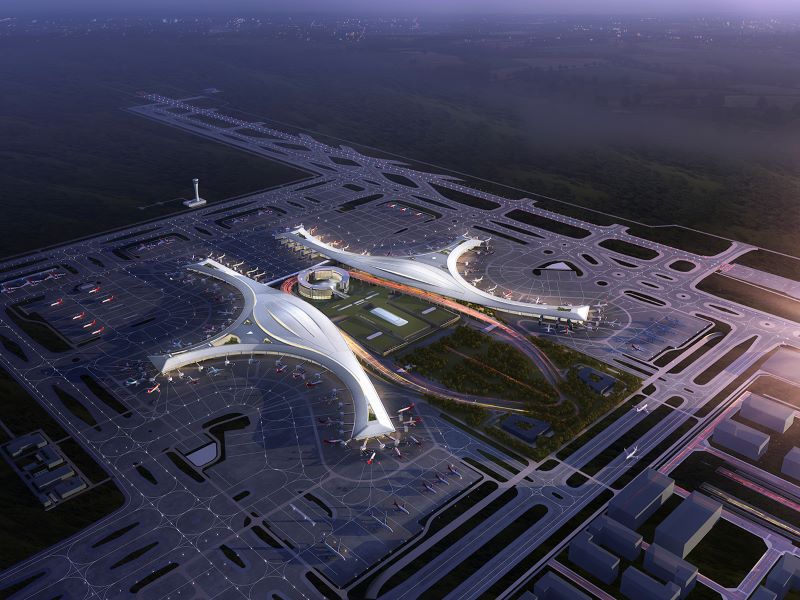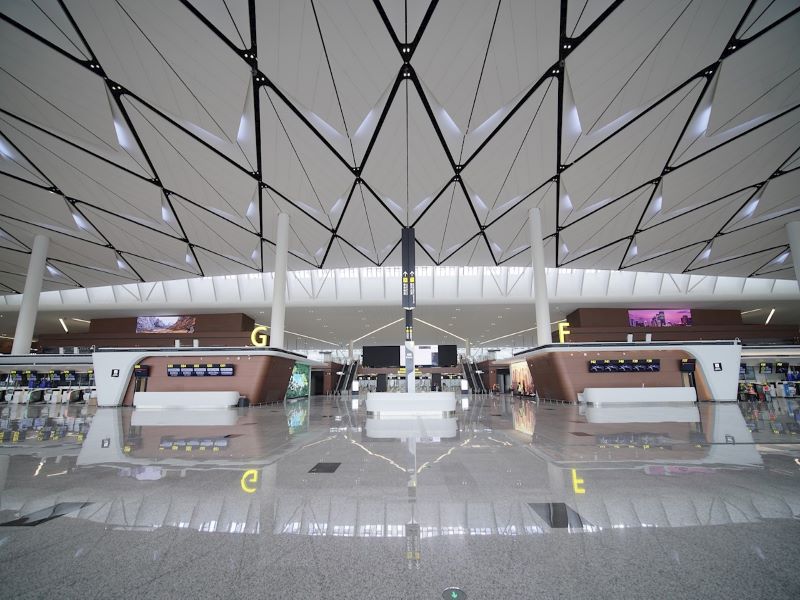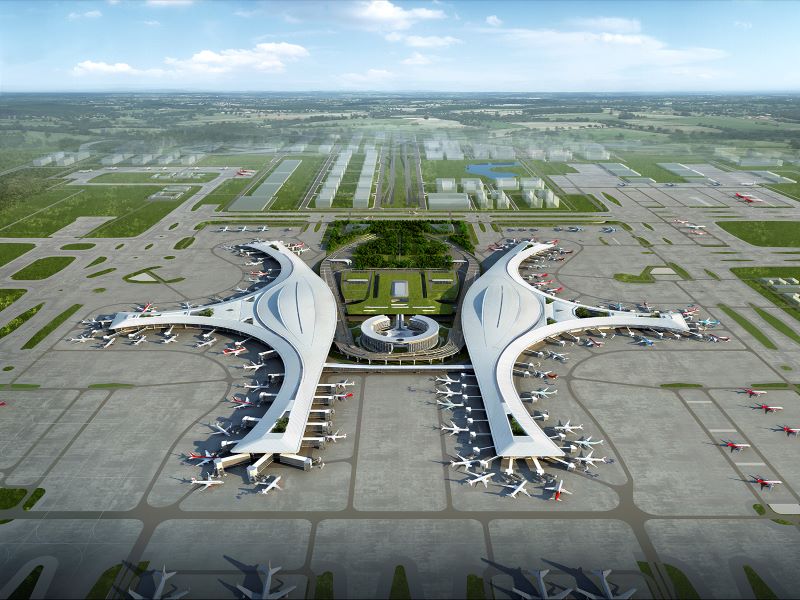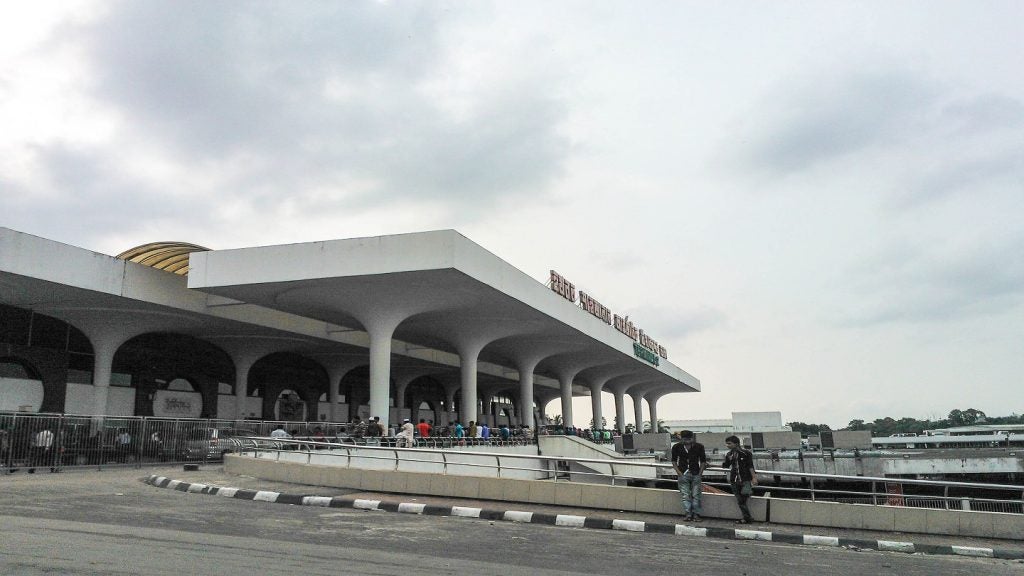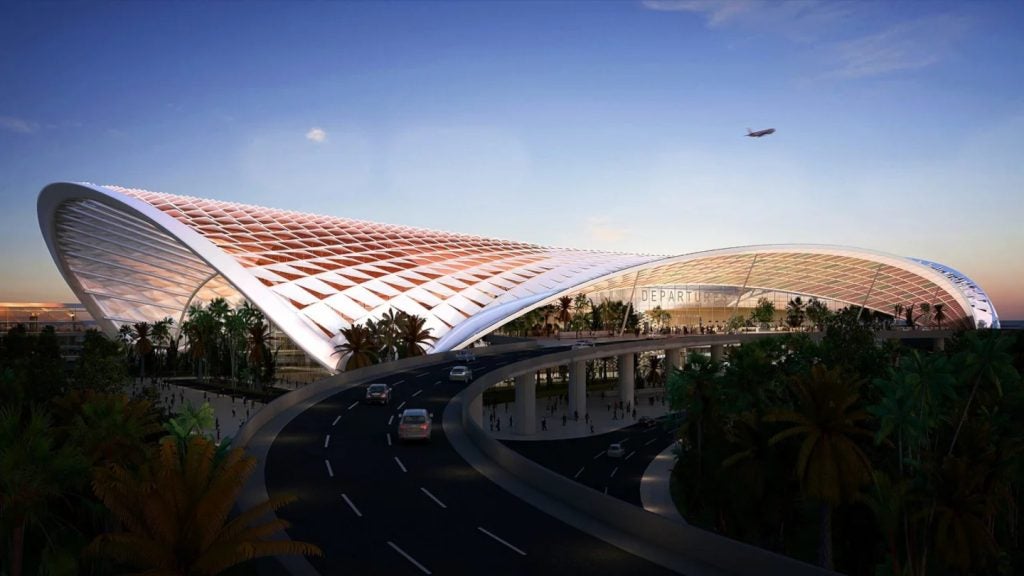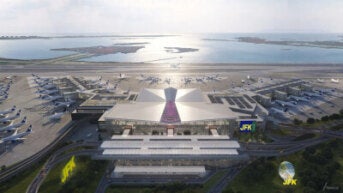The Chengdu Tianfu international airport in Chengdu was inaugurated in June 2021. Located approximately 50km east of downtown Chengdu, it is the second international aviation hub in the Sichuan province in south-west China. With the opening of the new airport, Chengdu became the third Chinese city to have two international airports, after Shanghai and Beijing.
Construction of the airport was started in May 2016, with an investment of $10.8bn in the first phase. The terminal area was completed in March 2021. The airport has an initial passenger handling capacity of 40 million a year, which will be increased to 90 million a year with the addition of new terminals and runways in the subsequent phases of development.
The Chengdu Tianfu airport is a 4F ranked international airport. 4F is the highest class assigned to an airport, which is capable of handling wide-body aircraft. The airport is expected to serve as a gateway to Europe, the Middle East, and different parts of Asia. It is also expected to boost the Sichuan province’s economy.
Chengdu Tianfu international airport design and features
Spanning 710,000m², the Chengdu Tianfu international airport features two terminals and three runways. The terminal buildings are designed in a shape that resembles the mythical sunbird, which is also the logo for Chengdu.
Terminal 1 (T1) mainly hosts international flights, whereas Terminal 2 (T2) handles domestic flights exclusively. The two terminal buildings are fitted with glass windows to maximise the amount of sunlight inside.
The T1 building is supported by more than 5,400 pile foundations. It includes a 270,000m² curtain wall while its lobby area features a feather-shaped suspended ceiling.
The lotus lake green eco-park at the airport site provides a relaxing environment for passengers and staff while also meeting China’s goal of developing sponge cities for efficient flood management.
Sustainability
The airport is a three-star green building, designed as an environmental-friendly, low-carbon, and sustainable structure to meet the latest green standards and achieve energy savings.
It was built using new building materials and photovoltaic power generation facilities. In addition, it incorporates rainwater collection and treatment and recycling technologies.
Ground transportation
The terminals of the airport are connected to the remote parking lots via a personal rapid transit (PRT) system provided by PRT solutions specialist Ultra Global. The 3km-long PRT smart car system is the second airport PRT in the world.
A comprehensive ground transportation centre (GTC) connecting terminals T1 and T2 was built to connect the passengers to high-speed rail, local railway, subway, taxi, and bus services. The intermodal GTC connects the buildings to four high-speed railway lines and two metro lines.
The two terminals are also connected by Alstom’s APM 300 automated people mover (APM) system, making it more convenient for passengers to commute between them. Commissioned in June 2021, the driverless Innovia APM vehicles move passengers via a dual-lane transit system. Each vehicle operates on a dedicated guideway underground, without affecting surrounding road or runway traffic.
Innovative technologies used at Chengdu Tianfu airport
Chinese multi-national technology company Huawei, in partnership with China Mobile Chengdu, installed 5G distributed massive multiple-input and multiple-output (MIMO) technology at the Chengdu Tianfu airport making it the first 5G Chinese airport to be installed with gigabit network technology.
The wall-to-wall indoor gigabit technology helped increase the single-user network rate by 26% to 1.25Gbps. The peak rate was achieved in a multi-user environment.
Huawei’s 5G network technology is expected to support the creation of high-quality network infrastructure at the airport to provide a smart flying experience for passengers.
ABB, a global leader in electrical technology, provided electrical solutions and an intelligent building control system for the airport. The ABB i-bus® KNX intelligent building control system comprises more than 19,000 switching circuits, 4,000 sensors, and 600 dimmers. It is expected to help reduce the airport’s energy usage by more than 30%.
Contractors involved in the airport development
The airport was designed and built by China State Construction Engineering Corporation (CSCEC). France-based consulting and engineering firm ADP Ingénierie along with China Southwest Architectural Design & Research Institute (CSWADI) was selected as the winner of an international design competition for the airport in 2015. The team was contracted to provide the master plan and architecture for the first phase of the airport development.
CRRC Puzhen Bombardier Transportation Systems (PBTS), a joint venture between CRRC Nanjing Puzhen and Bombardier Transportation Group, received a contract to provide the APM system for the airport in December 2018.
The contract also included the design, construction, installation, commissioning, and integration of the system. Furthermore, PBTS was awarded an operation and maintenance service contract for the Innovia APM system for the first two years. The contract also requires the company to provide routine maintenance of vehicles and other equipment of the APM system over the next eight years.
Winsom partnered with Yuncheng Construction Group to supply aluminium honeycomb panels for wall and column decoration in the GTC transfer hall.
Rohde & Schwarz was contracted to provide a very high frequency (VHF) radio communications system for the airport in May 2019. The company installed more than 240 R&S Series 4200 VHF/ultra-high frequency (UHF) radios and 17 controller working positions at the airport to provide reliable air traffic control.
Guangdong Oshujian Furniture Manufacturing was contracted to design and produce seating solutions for the airport.
Airbus installed its secure Tetra communications technology to interconnect the airport with Chengdu Shuangliu International Airport in June 2021.
Czech company Eldis Pardubice was selected to supply and install two surveillance radars at the Chengdu Tianfu international airport.
Global company KONE received a contract to deliver 218 elevators for the airport.

